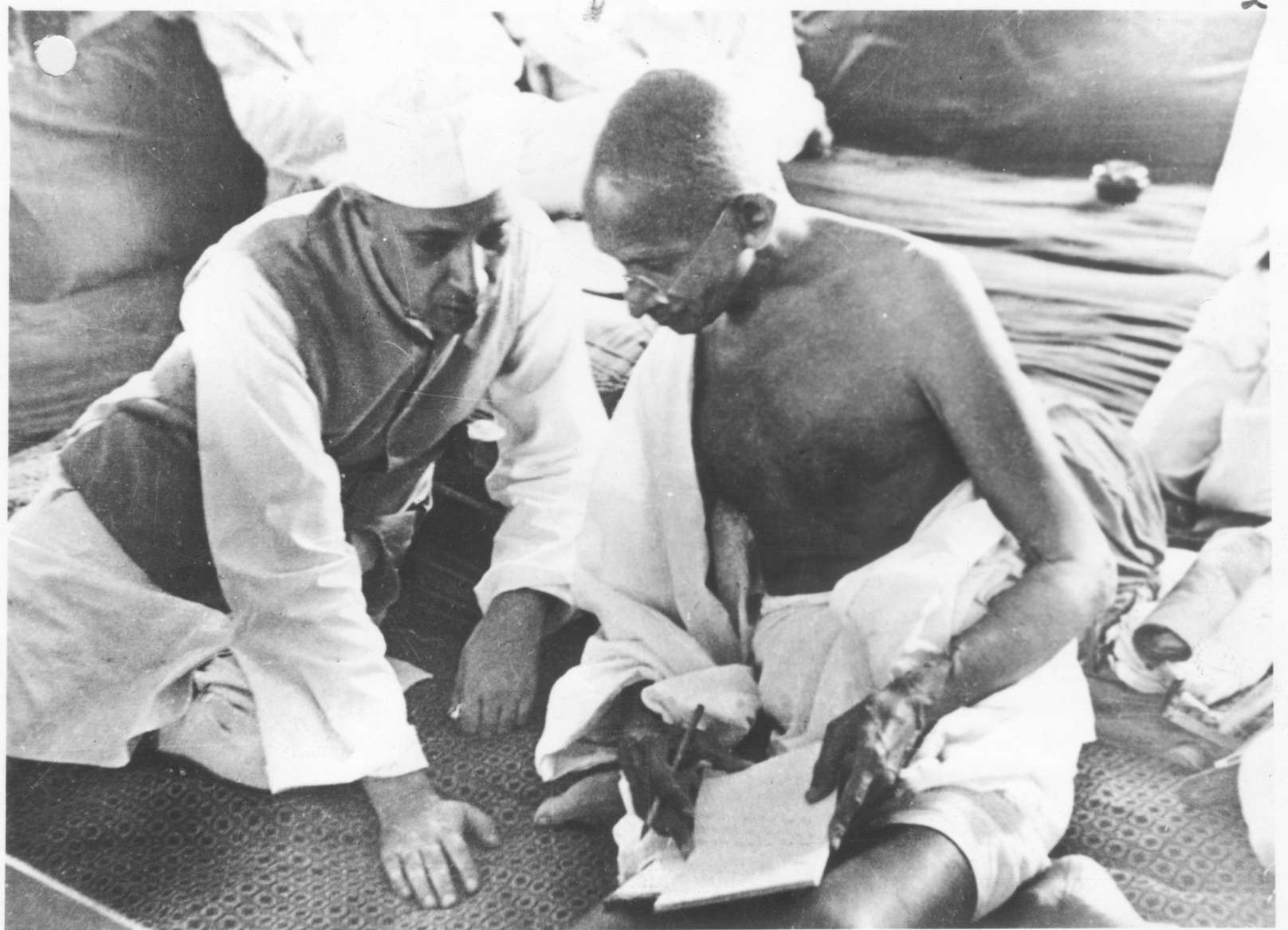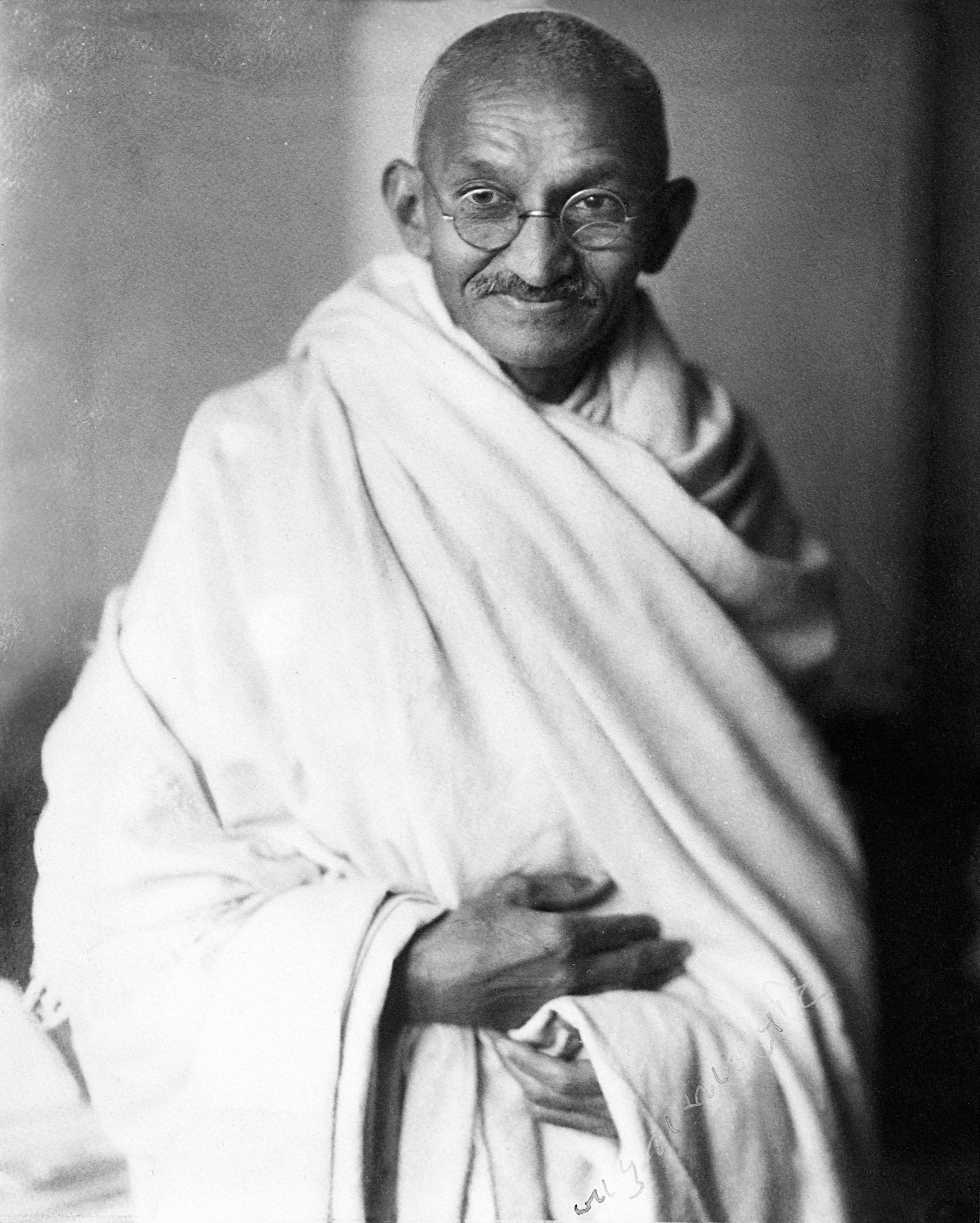|
Waiting For The Mahatma
''Waiting for the Mahatma'' is a 1955 novel by R. K. Narayan. Plot summary Sriram is a high school graduate who lives with his grandmother in Malgudi, the fictional Southern Indian town in which much of Narayan's fiction takes place. Sriram is attracted to Bharati, a girl of his age who is active in Mahatma Gandhi's Quit India movement, and he becomes an activist himself. He then gets involved with anti-British extremists, causing much grief to his grandmother. Sriram's underground activity takes place in the countryside, an area alien to him, and the misunderstandings with the locals provide the book's best comic moments. After spending some time in jail, Sriram is reunited with Bharati, and the story ends with their engagement amidst the tragedy of India's partition in 1947 and Gandhi's death in 1948. ''Waiting for the Mahatma'' is written in Narayan's gentle comic style. An unusual feature of this novel is the participation of Gandhi as a character. His revolutionary ideas an ... [...More Info...] [...Related Items...] OR: [Wikipedia] [Google] [Baidu] |
Michigan State University Press
Michigan State University Press is the scholarly publishing arm of Michigan State University. Scholarly publishing at the university significantly predates the establishment of its press in 1947. By the 1890s the institution's Experiment Stations began issuing a broad range of influential publications in the natural sciences (including a beautifully illustrated Birds of Michigan in 1892) and as early as 1876, professor A.J. Cook commissioned a Lansing printer to issue his popular Manual of the Apiary, which ran through numerous editions and remained in print for nearly half a century. Located on the MSU campus in East Lansing East Lansing is a city in the U.S. state of Michigan. Most of the city lies within Ingham County with a smaller portion extending north into Clinton County. At the 2020 Census the population was 47,741. Located directly east of the state capital ..., the press publishes principally in the areas of the humanities, sciences, and social sciences, with special ... [...More Info...] [...Related Items...] OR: [Wikipedia] [Google] [Baidu] |
1955 In Literature
This article contains information about the literary events and publications of 1955. Events *February 8 – Jin Yong's first ''wuxia'' novel, ''The Book and the Sword'' (書劍恩仇錄), begins publication in the ''New Evening Post'' (Hong Kong), where he is an editor. *March 3 – Jean Cocteau is elected to the ''Académie française'' (inducted October 20); on January 8 he has been elected to the ''Académie royale des Sciences, des Lettres et des Beaux-Arts de Belgique'' (inducted October 1). *April 16 – Sir Laurence Olivier's film version of Shakespeare's ''Richard III'' is released in U.K. cinemas. *July 10 – Jorge Luis Borges is appointed Director of the National Library of the Argentine Republic. *July 14 – Director Stephen Joseph sets up Britain's first theatre in the round at Scarborough, North Yorkshire, predecessor of the Stephen Joseph Theatre. *July 30 – The English poet Philip Larkin, having become University Librarian at the University of Hull on March 2 ... [...More Info...] [...Related Items...] OR: [Wikipedia] [Google] [Baidu] |
Hardcover
A hardcover, hard cover, or hardback (also known as hardbound, and sometimes as case-bound) book is one bound with rigid protective covers (typically of binder's board or heavy paperboard covered with buckram or other cloth, heavy paper, or occasionally leather). It has a flexible, sewn spine which allows the book to lie flat on a surface when opened. Modern hardcovers may have the pages glued onto the spine in much the same way as paperbacks. Following the ISBN sequence numbers, books of this type may be identified by the abbreviation Hbk. Hardcover books are often printed on acid-free paper, and they are much more durable than paperbacks, which have flexible, easily damaged paper covers. Hardcover books are marginally more costly to manufacture. Hardcovers are frequently protected by artistic dust jackets, but a "jacketless" alternative has increased in popularity: these "paper-over-board" or "jacketless" hardcover bindings forgo the dust jacket in favor of printing the cove ... [...More Info...] [...Related Items...] OR: [Wikipedia] [Google] [Baidu] |
Paperback
A paperback (softcover, softback) book is one with a thick paper or paperboard cover, and often held together with adhesive, glue rather than stitch (textile arts), stitches or Staple (fastener), staples. In contrast, hardcover (hardback) books are bound with cardboard covered with cloth, leather, paper, or plastic. Inexpensive books bound in paper have existed since at least the 19th century in such forms as pamphlets, yellow-backs, yellowbacks, dime novels, and airport novels. Modern paperbacks can be differentiated from one another by size. In the United States, there are "mass-market paperbacks" and larger, more durable "trade paperbacks". In the United Kingdom, there are A-format, B-format, and the largest C-format sizes. Paperback editions of books are issued when a publisher decides to release a book in a low-cost format. Lower-quality paper, glued (rather than stapled or sewn) bindings, and the lack of a hard cover may contribute to the lower cost of paperbacks. Paperb ... [...More Info...] [...Related Items...] OR: [Wikipedia] [Google] [Baidu] |
Malgudi
Malgudi is a fictional town located in Agumbe in Karnataka in the novels and short stories of R. K. Narayan. It forms the setting for most of Narayan's works. Starting with his first novel, ''Swami and Friends'', all but one of his fifteen novels and most of his short stories take place here. Malgudi was a portmanteau of two Bangalore localities - Malleshwaram and Basavanagudi. Narayan has successfully portrayed Malgudi as a microcosm of India. Malgudi was created, as mentioned in '' Malgudi Days'', by Sir Fredrick Lawley, a fictional British officer in the 19th century by combining and developing a few villages. The character of Sir Fredrick Lawley may have been based on Arthur Lawley, the Governor of Madras in 1905. But now MP of Shimoga (Lok Sabha constituency) has requested Indian Railways to rename Arasalu Railway Station a small station on Shimoga-Talaguppa railway line to Malgudi Railway station. Geography and origins Malgudi is located on the banks of the fictiona ... [...More Info...] [...Related Items...] OR: [Wikipedia] [Google] [Baidu] |
Mahatma Gandhi
Mohandas Karamchand Gandhi (; ; 2 October 1869 – 30 January 1948), popularly known as Mahatma Gandhi, was an Indian lawyer, anti-colonial nationalist Quote: "... marks Gandhi as a hybrid cosmopolitan figure who transformed ... anti-colonial nationalist politics in the twentieth-century in ways that neither indigenous nor westernized Indian nationalists could." and political ethicist Quote: "Gandhi staked his reputation as an original political thinker on this specific issue. Hitherto, violence had been used in the name of political rights, such as in street riots, regicide, or armed revolutions. Gandhi believes there is a better way of securing political rights, that of nonviolence, and that this new way marks an advance in political ethics." who employed nonviolent resistance to lead the successful campaign for India's independence from British rule, and to later inspire movements for civil rights and freedom across the world. The honorific ''Mahātmā'' (Sanskrit ... [...More Info...] [...Related Items...] OR: [Wikipedia] [Google] [Baidu] |
Quit India Movement
The Quit India Movement, also known as the August Kranti Movement, was a movement launched at the Bombay session of the All India Congress Committee by Mahatma Gandhi on 8th August 1942, during World War II, demanding an end to British rule in India. After the failure of the Cripps Mission to secure Indian support for the British war effort, Gandhi made a call to ''Do or Die'' in his Quit India movement delivered in Bombay on 8 August 1942 at the Gowalia Tank Maidan. The All India Congress Committee launched a mass protest demanding what Gandhi called "An Orderly British Withdrawal" from India. Even though it was at war, the British were prepared to act. Almost the entire leadership of the Indian National Congress was imprisoned without trial within hours of Gandhi's speech. Most spent the rest of the war in prison and out of contact with the masses. The British had the support of the Viceroy's Council, of the All India Muslim League, the Hindu Mahasabha, the princely state ... [...More Info...] [...Related Items...] OR: [Wikipedia] [Google] [Baidu] |
United Kingdom
The United Kingdom of Great Britain and Northern Ireland, commonly known as the United Kingdom (UK) or Britain, is a country in Europe, off the north-western coast of the continental mainland. It comprises England, Scotland, Wales and Northern Ireland. The United Kingdom includes the island of Great Britain, the north-eastern part of the island of Ireland, and many smaller islands within the British Isles. Northern Ireland shares a land border with the Republic of Ireland; otherwise, the United Kingdom is surrounded by the Atlantic Ocean, the North Sea, the English Channel, the Celtic Sea and the Irish Sea. The total area of the United Kingdom is , with an estimated 2020 population of more than 67 million people. The United Kingdom has evolved from a series of annexations, unions and separations of constituent countries over several hundred years. The Treaty of Union between the Kingdom of England (which included Wales, annexed in 1542) and the Kingdom of Scotland in 170 ... [...More Info...] [...Related Items...] OR: [Wikipedia] [Google] [Baidu] |
Indian Independence Movement
The Indian independence movement was a series of historic events with the ultimate aim of ending British Raj, British rule in India. It lasted from 1857 to 1947. The first nationalistic revolutionary movement for Indian independence emerged from Bengal. It later took root in the newly formed Indian National Congress with prominent moderate leaders seeking the right to appear for Indian Civil Service (British India), Indian Civil Service examinations in British India, as well as more economic rights for natives. The first half of the 20th century saw a more radical approach towards self-rule by the Lal Bal Pal, Lal Bal Pal triumvirate, Aurobindo Ghosh and V. O. Chidambaram Pillai. The final stages of the independence struggle from the 1920s was characterized by Congress' adoption of Mahatma Gandhi's policy of non-violence and Salt March, civil disobedience. Intellectuals such as Rabindranath Tagore, Subramania Bharati, and Bankim Chandra Chattopadhyay spread patriotic awarenes ... [...More Info...] [...Related Items...] OR: [Wikipedia] [Google] [Baidu] |
List Of Artistic Depictions Of Mahatma Gandhi
Mohandas Karamchand Gandhi (a.k.a. Mahatma Gandhi) was a key Indian independence movement leader known for employing nonviolent resistance against British Rule to successfully lead the campaign. He was the pioneer of ''Satyagraha'' — the resistance of alleged tyranny through mass civil disobedience, firmly founded upon ''ahimsa'' or total nonviolence — which inspired movements for civil rights and freedom around the world. Gandhi is commonly known in India and around the world with the honorific ''Mahatma Gandhi'' (Sanskrit: महात्मा ''mahātmā'' — "Great Soul") and as ''Bapu'' (Gujarati: બાપુ ''bāpu'' — "Father"). In India, he is recognised as the Father of the Nation by all Indians and 2 October, his birthday, is commemorated each year on Gandhi Jayanti, a national holiday. Currency and stamps In 1996, the Government of India introduced the Mahatma Gandhi series of currency notes in rupees 5, 10, 20, 50, 100, 500 and 1000 denomination. Tod ... [...More Info...] [...Related Items...] OR: [Wikipedia] [Google] [Baidu] |




